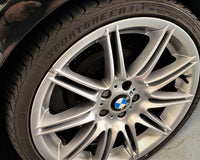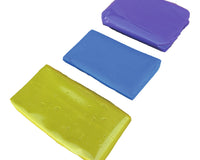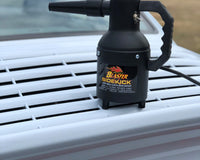Chrome trim and wheels can significantly enhance the appearance of any vehicle, adding a sleek and polished look that turns heads. However, maintaining that mirror-like shine requires proper care and technique. In this detailed guide, we will explore the best practices for cleaning and polishing chrome trim and wheels, ensuring they remain dazzling and protected from the elements.
Understanding Chrome Surfaces
Chrome, a type of metallic coating, is valued for its ability to provide a lustrous finish that is both durable and visually appealing. However, despite its durability, chrome surfaces are prone to tarnishing, scratching, and corrosion if not properly maintained. Chrome is often applied over other metals, such as steel or aluminium, through a process known as electroplating. This creates a thin, reflective layer that enhances the aesthetic appeal while providing some level of protection.
To keep chrome looking its best, it’s essential to understand the properties of the surface you are working with. Chrome trim and wheels are particularly susceptible to damage from harsh cleaning chemicals, abrasive tools, and environmental contaminants such as road salt and brake dust. Regular maintenance is key to preventing tarnish and corrosion. The best approach combines gentle cleaning methods with effective polishing techniques to maintain the integrity of the chrome layer while restoring its shine.
Properties of Chrome and Its Vulnerabilities
Chrome’s reflective quality comes from its smooth, electroplated surface, which is only microns thick. This thinness makes chrome susceptible to scratches and pitting from abrasive materials or harsh chemicals. Road salt, brake dust, and environmental pollutants can also damage chrome, leading to corrosion and loss of shine. Thus, cleaning and polishing must be done with care to avoid removing or damaging this protective layer.
Importance of Regular Maintenance
Regular maintenance is crucial for keeping chrome surfaces pristine. This involves frequent washing to remove contaminants that can dull the shine and cause corrosion. Polishing should be performed periodically to restore the reflective quality and protect the surface. A combination of gentle cleaning agents, non-abrasive tools, and protective coatings will help preserve the appearance and longevity of chrome trim and wheels.
Essential Tools and Products
To achieve professional results in cleaning and polishing chrome trim and wheels, it's essential to equip yourself with the right tools and products. Using improper materials can damage the chrome, leading to scratches and dulling of the finish. For optimal results, always choose products specifically designed for chrome and follow manufacturer guidelines.
Cleaning Supplies for Chrome
When it comes to cleaning chrome, gentle is the way to go. A pH-neutral car shampoo is ideal for washing away dirt and grime without damaging the chrome surface. Avoid using household cleaners or abrasive products as these can scratch and tarnish the chrome. Microfibre cloths are perfect for both washing and drying as they are soft, absorbent, and non-abrasive. For scrubbing stubborn dirt, a soft-bristled brush can be used. Always opt for brushes that are specifically designed for detailing to avoid scratching the chrome.
Polishing Products and Techniques
Polishing chrome requires specific products to restore its shine and protect it from future damage. Chrome polishes are available in paste or liquid forms and are designed to remove oxidation and fine scratches while enhancing the reflective finish. For best results, apply the polish with a soft applicator pad and buff with a clean microfibre towel. Some polishes also contain protective agents that leave a layer of wax or sealant, providing additional protection against environmental damage.
Protective Coatings
After polishing, applying a protective coating can help maintain the shine and protect the chrome from contaminants. There are various options, including waxes, sealants, and ceramic coatings, each offering different levels of protection. Waxes and sealants provide a barrier against dirt and water, making future cleaning easier. Ceramic coatings offer more durable protection by creating a hard, chemical-resistant layer that bonds to the chrome surface, providing long-lasting shine and ease of maintenance.
Step-by-Step Guide to Cleaning Chrome Trim
Cleaning chrome trim involves removing dirt, grime, and contaminants without scratching or tarnishing the surface. Follow these steps to effectively clean your chrome trim and maintain its shine:
Preparation and Initial Rinse
Begin by parking your vehicle in a shaded area to prevent water spots and ensure the chrome is cool to the touch. Use a hose to rinse off loose dirt and debris from the chrome trim. This initial rinse helps to remove surface contaminants that could scratch the chrome during washing. Be thorough, making sure to rinse all areas, including tight spots and crevices where dirt can accumulate.
Washing and Detailing
Mix a pH-neutral car shampoo with water according to the product instructions. Using a soft microfibre wash mitt, gently wash the chrome trim. Start from the top and work your way down to avoid dragging dirt over clean areas. Pay extra attention to intricate areas where grime tends to build up. For stubborn spots, use a soft detailing brush, but be gentle to avoid scratching. Rinse thoroughly with clean water, ensuring all soap residue is removed.
Drying and Inspecting
Dry the chrome trim with a clean, dry microfibre towel to prevent water spots. Inspect the chrome for any remaining dirt or contaminants. If any spots remain, gently clean them with a microfibre cloth and a small amount of car shampoo or dedicated chrome cleaner. This detailed inspection ensures that all areas are thoroughly cleaned before moving on to polishing.
Polishing Chrome Trim
Polishing chrome trim involves restoring its shine and providing protection against future damage. This process not only enhances the appearance but also helps to prevent oxidation and corrosion.

Choosing the Right Polish
Select a chrome polish that is designed for automotive use. Avoid using general metal polishes that may be too abrasive for chrome. Look for products that contain mild abrasives or polishing agents that can remove oxidation and minor scratches without damaging the chrome surface. Some polishes also include protective elements that help to seal the chrome, providing a longer-lasting shine.
Applying and Buffing Polish
Apply a small amount of polish to a soft applicator pad or microfibre cloth. Work the polish into the chrome trim using gentle, circular motions. Be careful not to apply too much pressure, which can cause scratches. Allow the polish to haze according to the product instructions. Once hazed, use a clean microfibre towel to buff the chrome, removing the polish residue and revealing a brilliant shine. For best results, work on small sections at a time to ensure even polishing and avoid leaving the polish on for too long.
Sealing and Protecting
After polishing, apply a protective sealant or wax to the chrome trim. This will provide a barrier against contaminants and help to maintain the shine. Follow the product instructions for application and curing times. Sealants and waxes can be applied with a soft applicator pad and buffed with a clean microfibre towel. This final step enhances the durability of the chrome finish, making it easier to clean in the future and preserving its reflective quality.
Cleaning Chrome Wheels
Chrome wheels require specific care to maintain their shine and prevent damage. The combination of road grime, brake dust, and environmental contaminants can quickly tarnish the appearance of chrome wheels if not properly maintained.
Preparing for Cleaning
Before cleaning chrome wheels, ensure they are cool to the touch to avoid damage from thermal shock. Rinse the wheels thoroughly with a hose to remove loose dirt and debris. This initial rinse helps to prevent scratches during the cleaning process. Use a high-pressure spray to reach all areas, including the wheel wells and behind the spokes, where dirt can accumulate.
Washing and Scrubbing
Use a dedicated wheel cleaner that is safe for chrome surfaces. Avoid using acidic cleaners or products that are not specifically formulated for chrome, as these can cause etching and tarnishing. Apply the wheel cleaner according to the instructions and use a soft wheel brush to gently scrub the surface. Pay attention to intricate areas and brake dust buildup. Rinse thoroughly with clean water to remove all cleaner residue and dirt.
Drying and Inspecting
Dry the wheels with a clean microfibre towel to prevent water spots. Inspect the wheels for any remaining dirt or brake dust. For any stubborn spots, use a detailing brush or a microfibre cloth to gently clean the area. This inspection ensures that the wheels are thoroughly cleaned and ready for polishing.
Polishing Chrome Wheels
Polishing chrome wheels helps to restore their shine and protect them from future damage. The process is similar to polishing chrome trim but may require additional steps to address the unique challenges posed by wheels.
Selecting the Right Polish
Choose a chrome polish that is designed for automotive wheels. Ensure that the polish is suitable for use on chrome surfaces and does not contain harsh abrasives. Some polishes are formulated specifically for wheels and include additional cleaning agents to remove brake dust and road grime.
Applying and Buffing Polish
Apply the polish to a soft applicator pad or microfibre cloth. Work the polish into the chrome wheels using gentle, circular motions. Focus on one section at a time to ensure even application. Allow the polish to haze according to the instructions. Once hazed, use a clean microfibre towel to buff the wheels, removing the polish residue and revealing a brilliant shine. Be thorough in buffing to ensure no polish residue is left behind.
Sealing and Protecting
After polishing, apply a protective sealant or wax to the chrome wheels. This will help to protect them from brake dust, road grime, and environmental contaminants. Follow the product instructions for application and curing times. A high-quality sealant or wax will provide a durable barrier, making future cleaning easier and preserving the shine of the chrome wheels.
Preventive Measures for Maintaining Chrome Surfaces
Maintaining the shine and condition of chrome trim and wheels requires ongoing care. Preventive measures can help to protect the chrome from damage and reduce the need for frequent polishing.
Regular Cleaning Routine
Incorporate regular cleaning into your vehicle maintenance routine. Wash chrome trim and wheels weekly to remove dirt, grime, and contaminants. Use gentle cleaning products and soft microfibre cloths to avoid scratching. Regular cleaning prevents the buildup of contaminants that can cause tarnishing and corrosion, keeping the chrome looking its best.
Protecting Against Environmental Damage
Apply a protective coating to chrome surfaces after each cleaning. Sealants and waxes provide a barrier against environmental damage, making it easier to clean the chrome in the future and reducing the risk of tarnishing. Consider using ceramic coatings for longer-lasting protection. These coatings bond to the chrome, providing a hard, chemical-resistant layer that enhances durability and shine.
Addressing Issues Promptly
Address any issues such as scratches, oxidation, or brake dust buildup promptly. The longer these issues are left untreated, the more difficult they can be to remove. Regular inspection and prompt treatment help to maintain the integrity of the chrome surface and prevent long-term damage.
Conclusion
Chrome trim and wheels are a stunning feature on any vehicle, but keeping them in pristine condition requires the right techniques and regular maintenance. By understanding the properties of chrome and following the proper steps for cleaning, polishing, and protecting these surfaces, you can ensure they remain a highlight of your vehicle's appearance. Equip yourself with the right tools and products, establish a regular maintenance routine, and address issues promptly to keep your chrome trim and wheels gleaming and protected for years to come.




